Higher classification Kale | Rank Cultivar | |
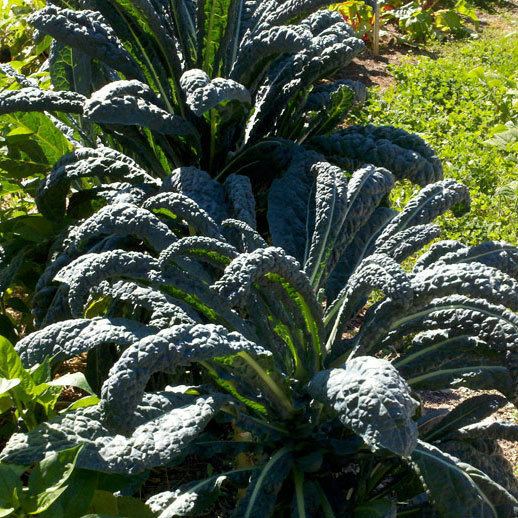 | ||
Similar Kale, Wild cabbage, Savoy cabbage, Chard, Brassica | ||
Lacinato kale (called cavolo nero, literally "black cabbage", in Italian and often in English) is a variety of kale with a long tradition in Italian cuisine, especially that of Tuscany. It is also known as Tuscan kale, Tuscan cabbage, Italian kale, dinosaur kale, black kale, flat back cabbage, palm tree kale, or black Tuscan palm. Lacinato kale has been grown in Tuscany for centuries, and is one of the traditional ingredients of minestrone and ribollita.
Contents
Description
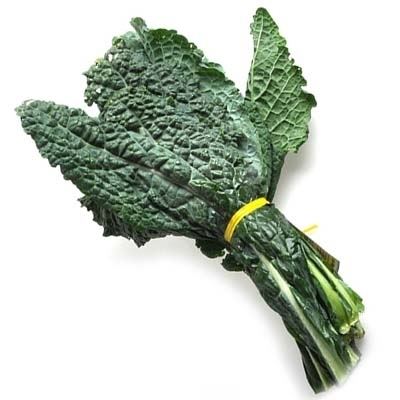
Lacinato kale grows 60 to 90 centimetres (2 to 3 feet) tall and has dark blue-green leaves with an "embossed texture"; its taste is described as "slightly sweeter and more delicate ... than curly kale." The lacinato variety is sometimes called "dinosaur kale" because its bumpy leaves are said to resemble what dinosaur skin is thought to have looked like. Because of its taste, "slightly bitter [and] earthy", it has been called "the darling of the culinary world".
Preparation and dishes
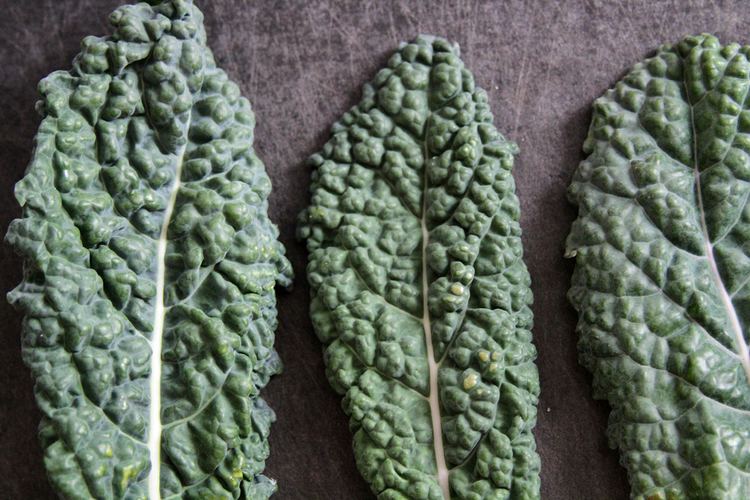
Lacinato kale, like most other kale varieties, is usually blanched first, and then sautéed with other, flavorful ingredients; in Campanian cuisine, anchovies are often added. It is commonly used in pastas and soups, but can also be eaten raw, in a salad.
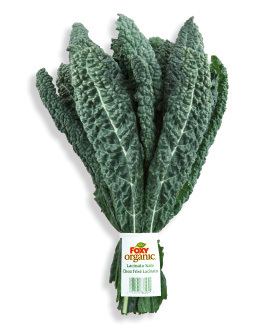
In Tuscan cuisine, lacinato kale is often used in ribollita ("twice cooked"), a thick, hearty soup made up of ingredients cooked for a meal the day before.
This kale is also used in other cuisines. In Montenegro and Croatia, it is known under the name raštan, raštika, or crno zelje (literally, black cabbage), and used as a side in winter dishes. In Dutch, it is called palmkool or zwarte kool (black cabbage).
Cultivation
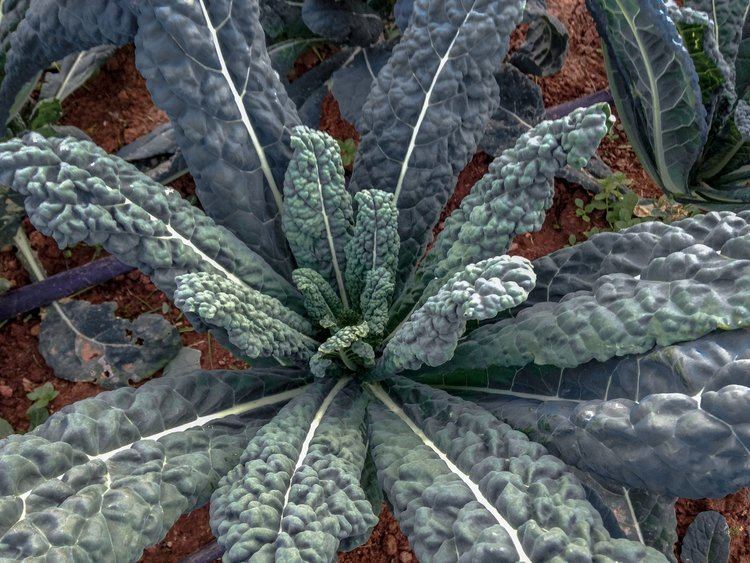
Lacinato kale dates to the 18th century in Italy. This cultivar is popular among gardeners because of its color and texture, and was listed amongst the plants Thomas Jefferson recorded in his 1777 garden at Monticello. The plant grows to a height of two feet, with blistered leaves often over one foot in length each and two to four inches wide. The "straplike" leaves are typically harvested from the bottom of the stem, leaving the remainder of the plant resembling a palm tree.
